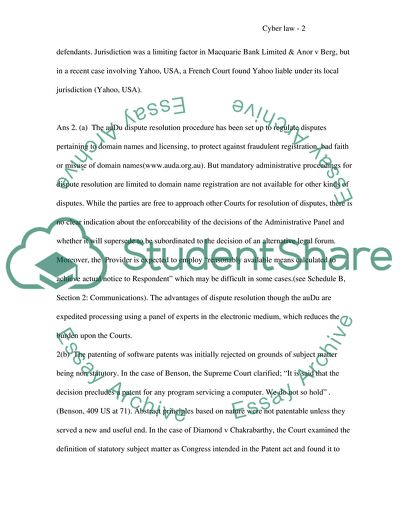Cite this document
(What Cyber Law Might Teach Assignment Example | Topics and Well Written Essays - 2455 words, n.d.)
What Cyber Law Might Teach Assignment Example | Topics and Well Written Essays - 2455 words. Retrieved from https://studentshare.org/information-technology/1703014-cyberlaw-assessment-no-2
What Cyber Law Might Teach Assignment Example | Topics and Well Written Essays - 2455 words. Retrieved from https://studentshare.org/information-technology/1703014-cyberlaw-assessment-no-2
(What Cyber Law Might Teach Assignment Example | Topics and Well Written Essays - 2455 Words)
What Cyber Law Might Teach Assignment Example | Topics and Well Written Essays - 2455 Words. https://studentshare.org/information-technology/1703014-cyberlaw-assessment-no-2.
What Cyber Law Might Teach Assignment Example | Topics and Well Written Essays - 2455 Words. https://studentshare.org/information-technology/1703014-cyberlaw-assessment-no-2.
“What Cyber Law Might Teach Assignment Example | Topics and Well Written Essays - 2455 Words”, n.d. https://studentshare.org/information-technology/1703014-cyberlaw-assessment-no-2.


